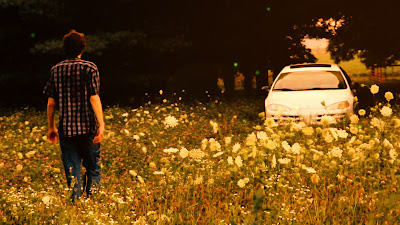The Foundry's Nuke Studio has a well clenched grasp in the post-production market, and more specifically, the compositing business. Nuke has the reputation of a flawless node-based workflow, efficient and effective composing tools, and a vast plug-in library. After digging deeper into Nuke and its processes, it is not hard to understand why there is so much success behind The Foundry's flagship program.
User Interface
As a relatively new user to Nuke Studio (6 months experience), I find the "learning curve" to be welcoming to users if they have had experience with prior node-based compositing programs such as Autodesk's Flame, or Blackmagic Fusion 8. Nuke has a sleek and simple approach to its interface.
Accessing color channels, layer channels, and gamma settings are arranged in a stress free manner, and provide essential information for all compositing tasks. The dope sheet is a separate tab under the viewer, that displays the keyframes for any node opened in the project window.
If I had one immediate criticism, it would be the curve editor. I find it sloppy and difficult to edit compared to the curve editor in Adobe After Effects. I admit, I'm not a curve editor pro, but I should not have to be engaged in a guessing game with the curve editor.
Nodes
I am impressed by the nodes in Nuke. Blackmagic Fusion was and is a great compositing piece of software, but my biggest complaint were properly setting up alpha, depth, and other passes. To create these passes, I would have to combine different channel nodes with color nodes, and then link the passes back up with a channel node. In Nuke, it is as simple as using a channel node. I do suggest exporting a single EXR image file and separating the passes that way. If not, you have to combine the passes, and create layer passes for each pass. It is simply a lot of busy work.Lightwraps are simple within Nuke; it's just one node function, again. In Fusion, the alpha pass has to be blurred, and then processed through another channel pass, followed up with an erode node. Nuke supplies all of the work into one responsive node.
I have to give a shout-out to the exceptional tracking nodes, and the 3D scene integration nodes. The 3D scene nodes are supplied by Nuke, and the user simply needs to plug in the necessary nodes into the required pipeline.
Speed and Performance
Nuke can have all of the bells and whistles of a great interface, but all of that is useless if the program crashes more often than not. Good news, Nuke is a performance powerhouse. Over the time of six months, I can count on one hand the times I encountered a crash. Node effects are almost immediate, and edits are visible in real-time.Performance begins to hinder when 3D objects are inserted into 3D scenes with lighting and textures. The same can be said with a highly-composited scene with rotobrushes, masks, composited objects, and tracked shots. This is standard for most compositing packages, except Flame; which is the software's selling point. To help speed up previews, double check node settings and apply low quality effects until the sequence is ready to be rendered.
Judgement
Nuke is a powerful well-received compositing piece of software. I find myself discussing Nuke and its features whenever possible. Only having six months experience, I know I barely scratched the surface; I look forward to exploring particle simulation and stereoscopic compositing. I am looking forward to the future with Nuke, and uncovering other software packages offered by The Foundry.






